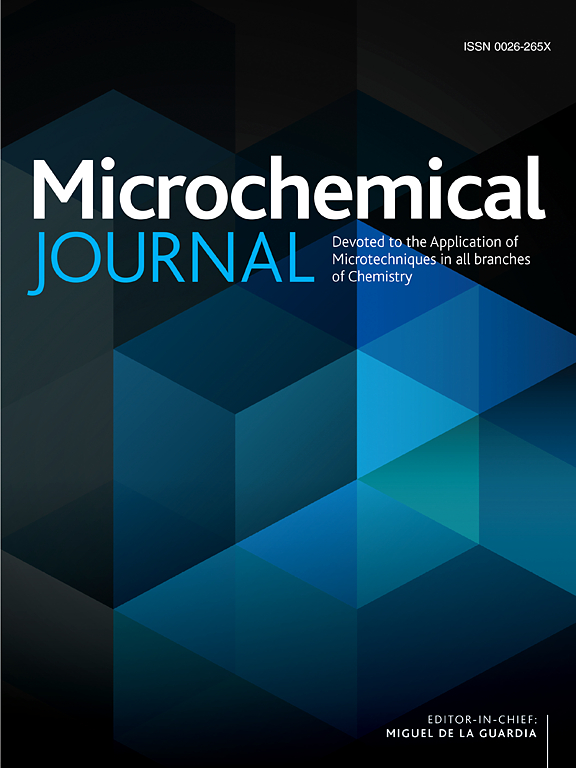Biomimetic molecularly imprinted hollow fiber membranes for continuous Enantioseparation of amlodipine
IF 4.9
2区 化学
Q1 CHEMISTRY, ANALYTICAL
引用次数: 0
Abstract
Critical chiral separation is critically important in pharmaceutical development since enantiomers often exhibit markedly different pharmacological profiles, as exemplified by amlodipine where the (S)-enantiomer exhibits potent antihypertensive activity while the (R)-counterpart shows negligible therapeutic effect. Such dramatic differences in bioactivity necessitate the development of efficient enantioseparation technologies to ensure drug safety and efficacy. We have developed a novel biomimetic separation system employing molecularly imprinted hollow fiber membranes (MIMs) for the efficient resolution of racemic amlodipine. The molecular imprinting process involves polymerization in the presence of the target (S)-amlodipine template, creating cavities with tailored shape and functional groups that exhibit selective rebinding affinity. These membranes synergistically combine the high surface area and excellent mass transfer properties of hollow fiber substrates with the precise molecular recognition capabilities of molecularly imprinted polymers (MIPs). The MIP layer, functioning as artificial antibody mimics, was specifically designed to recognize and capture the target (S)-amlodipine enantiomer with high fidelity. The covalent/non-covalent interactions between the template and functional monomers during imprinting ensure optimal stereochemical complementarity for chiral discrimination. Remarkably, this system achieves exceptional chiral separation performance without requiring any external chiral selectors. The optimized MIMs demonstrate an outstanding separation factor (α) of 3.79 within a remarkably short processing time of just 5 min. This exceptional performance stems from the unique combination of the hollow fiber's convective flow characteristics and the MIP's selective binding sites, which together enable both high throughput and precise enantiomeric discrimination. The practical advantages of this technology extend beyond its separation performance. The membrane fabrication process is straightforward and reproducible, while the modular nature of hollow fiber systems allows for seamless scale-up to industrial production levels. These attributes position our MI-HFM technology as a transformative platform for the commercial-scale production of enantiopure pharmaceuticals, offering significant advantages over conventional separation methods in terms of both efficiency and cost-effectiveness. The successful implementation of this approach could substantially improve the economic viability of single-enantiomer drug manufacturing while ensuring higher product purity. Looking forward, this technology platform shows considerable potential for adaptation to other chiral separation challenges in the pharmaceutical industry.

氨氯地平连续对映体分离的仿生分子印迹中空纤维膜
关键手性分离在药物开发中至关重要,因为对映体通常表现出明显不同的药理学特征,例如氨氯地平,(S)-对映体表现出有效的降压活性,而(R)-对映体的治疗效果可以忽略不计。这种生物活性的巨大差异要求开发高效的对映体分离技术,以确保药物的安全性和有效性。我们开发了一种新型的仿生分离系统,该系统采用分子印迹中空纤维膜(MIMs)进行外消旋氨氯地平的高效分离。分子印迹过程包括在目标(S)-氨氯地平模板存在的情况下进行聚合,产生具有定制形状和官能团的空腔,这些空腔表现出选择性的重结合亲和力。这些膜协同结合了中空纤维衬底的高表面积和优异的传质性能以及分子印迹聚合物(MIPs)的精确分子识别能力。MIP层作为人工抗体模拟物,被专门设计用于高保真地识别和捕获目标(S)-氨氯地平对映体。在印迹过程中,模板和功能单体之间的共价/非共价相互作用确保了最佳的立体化学互补,以进行手性识别。值得注意的是,该系统无需任何外部手性选择剂即可实现出色的手性分离性能。优化后的MIP在极短的5分钟处理时间内具有3.79的分离因子(α)。这种卓越的性能源于中空纤维的对流流动特性和MIP的选择性结合位点的独特组合,两者共同实现了高通量和精确的对映体识别。该技术的实用优势超出了它的分离性能。膜制造过程简单且可重复,而中空纤维系统的模块化特性允许无缝扩展到工业生产水平。这些特性使我们的MI-HFM技术成为商业规模生产对映纯药物的变革性平台,在效率和成本效益方面比传统分离方法具有显着优势。该方法的成功实施可以大大提高单对映体药物制造的经济可行性,同时确保更高的产品纯度。展望未来,该技术平台在适应制药行业的其他手性分离挑战方面显示出相当大的潜力。
本文章由计算机程序翻译,如有差异,请以英文原文为准。
求助全文
约1分钟内获得全文
求助全文
来源期刊

Microchemical Journal
化学-分析化学
CiteScore
8.70
自引率
8.30%
发文量
1131
审稿时长
1.9 months
期刊介绍:
The Microchemical Journal is a peer reviewed journal devoted to all aspects and phases of analytical chemistry and chemical analysis. The Microchemical Journal publishes articles which are at the forefront of modern analytical chemistry and cover innovations in the techniques to the finest possible limits. This includes fundamental aspects, instrumentation, new developments, innovative and novel methods and applications including environmental and clinical field.
Traditional classical analytical methods such as spectrophotometry and titrimetry as well as established instrumentation methods such as flame and graphite furnace atomic absorption spectrometry, gas chromatography, and modified glassy or carbon electrode electrochemical methods will be considered, provided they show significant improvements and novelty compared to the established methods.
 求助内容:
求助内容: 应助结果提醒方式:
应助结果提醒方式:


